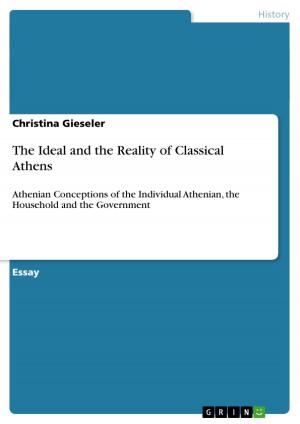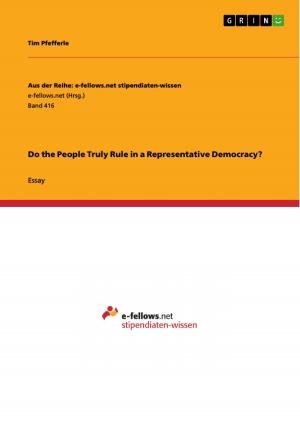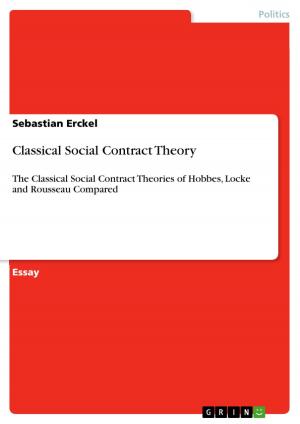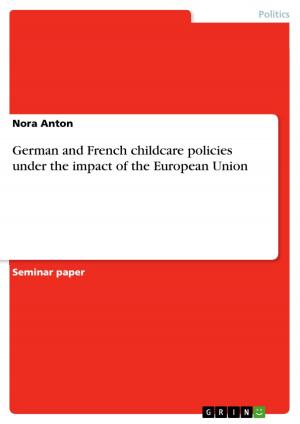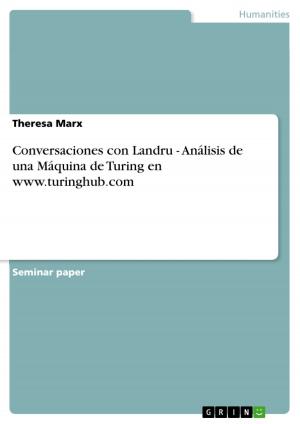Is 'The Jungle' by Upton Sinnclair really a city novel?
Nonfiction, Entertainment, Drama, Anthologies| Author: | Nora Emanuelle Boehmer | ISBN: | 9783638555623 |
| Publisher: | GRIN Publishing | Publication: | October 16, 2006 |
| Imprint: | GRIN Publishing | Language: | English |
| Author: | Nora Emanuelle Boehmer |
| ISBN: | 9783638555623 |
| Publisher: | GRIN Publishing |
| Publication: | October 16, 2006 |
| Imprint: | GRIN Publishing |
| Language: | English |
Seminar paper from the year 2005 in the subject American Studies - Literature, grade: 1.7, University of Potsdam (Institut für Anglistik/Amerikanistik), course: HS: Zwischen White City and Slum Fiction, 6 entries in the bibliography, language: English, abstract: The question being discussed in this paper is whether or not Upton Sinclair'sThe Junglecan be regarded as one of the great city novels in American Literature. It is a rather difficult question that made me think of a painting I discovered when I was searching for literature about this topic. It can be seen at the front page of this paper. The painting is calledIch und die Stadtand was painted by an artist called Ludwig Meidner in 1913. It appeared along with other paintings of city impressions in a book carrying the title of Meidner's painting,Ich und die Stadt.The painting is supposed to be depicting a person and his city, but is that really what the viewer can see? Is it not a mere chaos that is presenting itself in this piece of art? There are houses, telegraphing poles, chimneys, patches of green, smoke, streets and in the front we can see a face. It is looking at us, the observer of the painting, in a little provocative way. The interpreters of the painting used a quote by Meidner himself that can be found in his book Im Nacken das Sternenmeer (1918). To express his thoughts about this face in the painting, he said: 'Was peitscht mich denn so in die Stadt hinein? Was ras ich verrückt heerstraßenlang?...'. An this is what most people wonder about the city, why is this place like a magnet? The painting is drawn with sudden strokes of the paintbrush, reflecting the impulsiveness of the city, the speed, which is part of the city. The painting does not express any calmness, there are no places to rest the eye on. What I also found striking is that there is no symbiosis between human being and the city, they are in the same painting but do not seem to be forming a unit. The thought I had when I looked at the painting was that for me it represented Jurgis and Chicago. Jurgis as the lost face in the front of the painting being put in the centre of attention without even wanting to be there and in the back, Chicago a city of chaos. Jurgis, the face, seems to be wondering if he should really dive into that chaos; maybe this is the moment where he last looks back on what he is leaving behind before going in the city. And is that painting really depicting a city or is it depicting the person, wanting to be in the city? And isThe Junglereally depicting the city or is it depicting what the city does to its inhabitants? Or is that the same? In this paper I will focus on Sinclair's description of Chicago inThe Jungle. [...]
Seminar paper from the year 2005 in the subject American Studies - Literature, grade: 1.7, University of Potsdam (Institut für Anglistik/Amerikanistik), course: HS: Zwischen White City and Slum Fiction, 6 entries in the bibliography, language: English, abstract: The question being discussed in this paper is whether or not Upton Sinclair'sThe Junglecan be regarded as one of the great city novels in American Literature. It is a rather difficult question that made me think of a painting I discovered when I was searching for literature about this topic. It can be seen at the front page of this paper. The painting is calledIch und die Stadtand was painted by an artist called Ludwig Meidner in 1913. It appeared along with other paintings of city impressions in a book carrying the title of Meidner's painting,Ich und die Stadt.The painting is supposed to be depicting a person and his city, but is that really what the viewer can see? Is it not a mere chaos that is presenting itself in this piece of art? There are houses, telegraphing poles, chimneys, patches of green, smoke, streets and in the front we can see a face. It is looking at us, the observer of the painting, in a little provocative way. The interpreters of the painting used a quote by Meidner himself that can be found in his book Im Nacken das Sternenmeer (1918). To express his thoughts about this face in the painting, he said: 'Was peitscht mich denn so in die Stadt hinein? Was ras ich verrückt heerstraßenlang?...'. An this is what most people wonder about the city, why is this place like a magnet? The painting is drawn with sudden strokes of the paintbrush, reflecting the impulsiveness of the city, the speed, which is part of the city. The painting does not express any calmness, there are no places to rest the eye on. What I also found striking is that there is no symbiosis between human being and the city, they are in the same painting but do not seem to be forming a unit. The thought I had when I looked at the painting was that for me it represented Jurgis and Chicago. Jurgis as the lost face in the front of the painting being put in the centre of attention without even wanting to be there and in the back, Chicago a city of chaos. Jurgis, the face, seems to be wondering if he should really dive into that chaos; maybe this is the moment where he last looks back on what he is leaving behind before going in the city. And is that painting really depicting a city or is it depicting the person, wanting to be in the city? And isThe Junglereally depicting the city or is it depicting what the city does to its inhabitants? Or is that the same? In this paper I will focus on Sinclair's description of Chicago inThe Jungle. [...]




